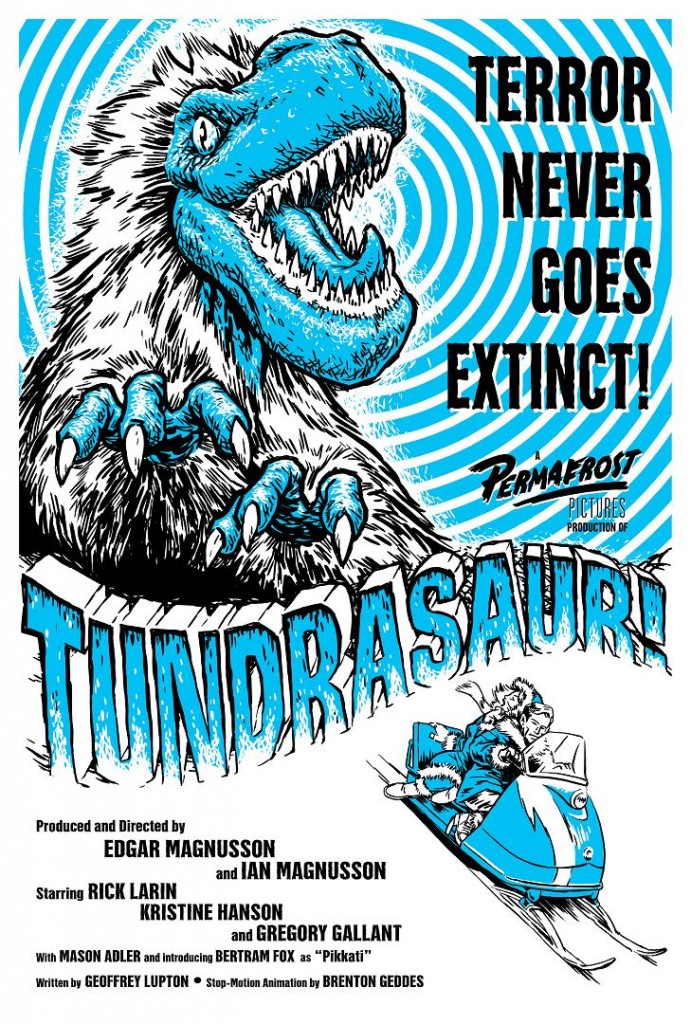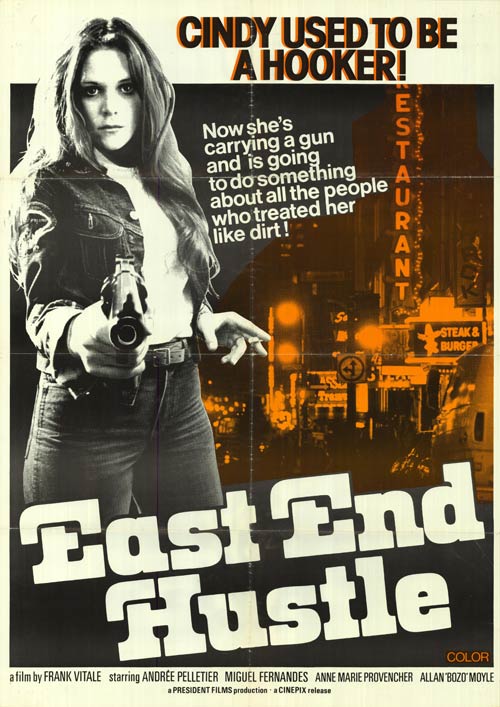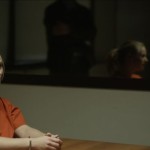MAPLE SYRUP MEMORIES
MAPLE SYRUP MEMORIES
Rue Morgue’s Dave Alexander curates a multimedia exhibit of imaginary Canuxploitation films while canadian online pharmacy no prescription needed the BBAM! Gallery hosts a show of Cinepix co-founder John Dunning’s personal poster collection
—————————-
Writer and filmmaker Dave Alexander has been a champion of classic Canadian horror since before his days as Editor-in-Chief of Rue Morgue Magazine, and through the magazine he’s been able to have a hands-on role in extolling the virtues of Canucks amok in genre films both old and new (Rue Morgue covers under his tutelage have ranged from Peter Carter’s 1977 backwoods horror Rituals to Astron-6’s gut-busting gorefest Father’s Day). But If They Came From Within may be Alexander’s most ambitious project to date. A full-on multimedia exhibit – to premiere at the prestigious Cinematheque quebecoise before embarking on a nationwide tour – the project will bring to life over a dozen imaginary Canuxploitation films with original poster art, film trailers, radio spots and over the top synopses that may leave you wondering “why don’t these films exist?”
The drool-worthy lineup of participating filmmakers is a who’s who of both established and emerging Canuck talent; in addition to many offerings from Alexander himself, we’ll see faux film campaigns from Jason Eisener (Hobo With a Shotgun), Vincenzo Natali (the director of Splice and Cube, who expands upon Jeff Lieberman’s Blue Sunshine mythos), Bruce McDonald and Tony Burgess (who bring us two imaginary sequels to their plucky genre-bender Pontypool – one of which aims to become a real movie as part of Fantasia’s inaugural Frontières co-production market!), Lee Demarbe (who gave us Jesus Christ: Vampire Hunter a decade before Abraham Lincoln was repurposed to similar ends), Maurice Deveraux (the director of End of the Line, who here draws upon Quebecois folklore to create a chilling tale of child-murder), Eric Tessier (director of 5150 Rue des ormes), Brett Kelly (My Dead Girlfriend), Donna Davis (director of KNB FX documentary Nightmare Factory), Rodrigo Gudiño (The Facts in the Case of Mister Hollow), Karim Hussain (director of La Belle Bete and cinematographer for both Hobo With a Shotgun and Brandon Cronenberg’s Antiviral) and original tax-shelter-era icon George Mihalka (My Bloody Valentine).
The eye-popping poster art for these imaginary films will be created by Rupert Bottenberg, Angus Byers, Donald Caron, Jason Edmiston, Justin Erickson, Vince Marconi, Mathew Marigold, Richard Patmore, Martin Plante, Ghoulish Gary Pullin, Paige Reynolds, Eric Robillard, Mathew Verreault, Adam Vierra, Mark Unterberger and James White, while Montreal musician Conrad Simon will provide additional atmosphere with his original soundtrack recordings for this canadian pharmacy viagra alternate history of Canadian horror.
Rather fortuitously, at the same time this exhibit was being fashioned for its Fantasia premiere, local promoter, BBAM! Gallery owner, writer and artist Ralph Alfonso was offered the opportunity to exhibit posters from the personal collection of the late John Dunning (whose pioneering Canadian film company Cinepix with partner Andre Link was the subject of a tribute at last year’s festival). While the artwork for Cinepix’ original productions was quickly adopted into various Canadian archives, there remained a wealth of materials for the many films Cinepix distributed before and during their buy levitra online dream pharmaceutical years as a production company. These films range from Scandinavian sexploitation to challenging but ‘legit’ arthouse titles, showing a cultural and intellectual diversity that exploitation film companies were often not given credit for.
But the biggest surprise came in the form of sell-sheets for films Cinepix never made. Although it is common for exploitation producers to hawk yet-to-be-made product at film markets in an effort to raise the funds to actually make the film, the tie-in with Dave Alexander’s exhibit of ‘imaginary’ Canuxploitation films was too exciting to ignore, and Alfonso found himself working with Alexander to bolster the latter’s exhibit with a few unseen treasures from the Cinepix catalogue of unmade films.
In this two-tiered interview, Spectacular Optical speaks with first Dave Alexander and then Ralph Alfonso about the legacy of gonzo ad campaigns in Canada and the recent reappraisal of the exploitation film’s place in our cultural heritage.
—————————
DAVE ALEXANDER:
What was your aesthetic criteria for selecting the participants?
Dave Alexander: In terms of the filmmakers, I wanted them to have expressed a love for horror films and to have made at least one horror feature. I also wanted to have a range of filmmakers across the spectrum, with mix levitra and cialis a particular focus on Quebec, as the show is part of Fantasia. Of course, what you want and what you can get are two different things. At the end of the day, you have to go with who you can get in touch with and agrees to participate. I’m lucky to know a lot of the participants through the Rue Morgue, so I first sought out filmmakers I knew would be enthusiastic about If They Came From Within, and able to submit the required material. I would’ve loved to have more female participation but don’t have a lot of female horror directors yet hopefully that’s changing. I was able to get a decent selection of filmmakers of different ages, styles and who work with different budgets, to give it some variety.For the designers, again, it was people that I know or that I was referred to by other designers and by Mitch Davis of Fantasia, who was instrumental in helping me contact both filmmakers and designers. Again, I wanted them to have some experience and enthusiasm when it comes to horror. And then a bunch of the posters are from my own write-ups. I tried to create a wide variety of fictional stories from different eras to fill in the gaps a bit in the timelines. I provided a bunch to the filmmakers anddesigners as examples, and a bunch of the designers wanted to do them. I didn’t plan to have so many of my own films in the show, but they didn’t come at the expense of anyone else, so I guess it worked out. I’ve got a ton of ideas for various fictional Canuck genre films.
For the designers it seems like you went for a lot of people who work in the commercial industry (people who design for magazines or do posters for major distributors) did you see this commercial experience as an important element of what the project needed?
DA: Actually I was worried that I wasn’t going to find anyone working in the commercial industry at first, but I started asking around and found someone who knew a bunch of folks and forwarded my email. I think there’s a pretty even balance of commercial and non-commercial in there right now.
What guidelines did you give filmmakers for creating their campaigns?
DA: I asked for a title, year the film would’ve been made (which could include the future, as well), a tagline and brief synopsis. And that the film would fall under the banner of Canadian horror.
How would you describe the collaborative process between the filmmakers and designers?
DA: I was excited by the idea of seeing what the more designers might come up with when given free rein. I purposely didn’t put them in touch with the filmmaker because I wanted them to not get in a situation where they felt project managed, so they could let their imaginations run wild within the concepts provided, of course.
In what ways do the proposed campaigns play with Canadian stereotypes?
DA: The filmmakers interpreted the “Canadian-ness” of the project in different ways. Some took established subgenres and gave them a Canuck makeover, such as Lee Demarbre’s Emanuelle, Eh? Or my Farm of Frankenstein. Some draw upon folklore, such as Maurice Devereaux’s The Bonesetter. Others poke fun at political and cultural tensions, such as Karim Hussain’s The Devil’s Box. And others draw upon specific regional settings to tell really wild stories, such as Jason Eisener’s Caprice, which involves gangster fish-men in an apocalyptic version of the Maritimes.
You spearheaded this project what was your goal when you thought of it? As Editor of Rue Morgue you are seen as a facilitator, a person who nurtures the genre community. Did you see this project as an extension of that role?
DA: Before Rue Morgue, I had a huge interest in Canadian horror films, as this overlooked niche that tells us a lot about our country and the way we think about the world. While getting my Film Studies degree in Edmonton, I first met Paul Corupe (who’s helping me with the project), through his Canuxploitation website, as, at the time, he was the only person with any solid information about Black Christmas, which I was writing a paper on. He further stoked my interest, and I ended up writing more and more about Canadian genre cinema,including doing a project on Canuxploitation itself and what it means. Then I discovered Rue Morgue and fell in love with its Canadian bent to the genre and support of Canuck horror. So I guess If They Came From Within is sort of a natural extension of that. I’m in love with the idea of a thriving Canadian horror scene and telling genre stories from our perspective, and perhaps just wondering what kinds of films could have existed if our horror output was as consistent and robust as that of the U.S. First and foremost, though, this just seemed like a really fun way to celebrate Canadian horror and show people the possibilities. Nothing would make me happier than to see some of these stories actually get made into films.
One of the things I like about the project isn’t just , as you say “to foster an interest in the possibilities of Canadian genre film to the average cinemagoer” but also to expose these possibilities to funders who have a hard time seeing the value of genre cinema. I like that this is a way to show them the level of enthusiasm cinephiles in Canada have for genre cinema, and that funding these kinds of films is not an embarrassment, a bad investment or unrepresentative of Canadian culture overall.
DA: I think the Canadian horror scene is on the verge of an explosion as that old way of thinking is dying out and we’re getting international recognition for films such as Hobo With a Shotgun, Splice, Father’s Day, etc. The stigma attached to horror that goes back to the critical hand-wringing over the Tax Shelter films still hangs in the air, but it’s disappearing, and we’re developing a real sense of pride for our genre stuff. There is a growing fan culture for Canadian horror, and filmmakers, such as Jason Eisener or the Astron 6 gang come directly from that, so things are coming full circle in a way.
With Father’s Day and Hobo With a Shotgun coming out and making a splash on the fest circuit over the past year, do you think Canadian genre film production is being kicked up a notch?
DA:I do think we’re on the verge of at least a mini-explosion of Canuck genre stuff. I’ve talked about this with some of the filmmakers involved with If They Came From Within, and there’s a feeling in the air that Canuxploitation will have a resurgence. I hope that, at least in somesmall way, this project will have a hand in that.
There is a bit of Canuxploitation mania sweeping the world over the last decade, a lot of love for the old tax shelter films. Where do you think this came from? I tend to see Caelum Vatnsdal’s book and Paul Corupe’s website as instrumental in this resurgence what do you think?
DA: Canuxploitation, as I mentioned, is very instrumental, as is Caelum’s awesome book - the title of his book, which of course is taken from the American title of Cronenberg’s Shivers - inspired the title of this show. Those guys are vital to fostering an appreciation and preservation of our horror history. I cannot overstate their importance. That love is both an extension of the nostalgia and appreciation for that
pre-digital age of horror cinema, and a way to celebrate Canadian culture in a somewhat rebellious (translation: cool) way by saying, “These films means just as much or more to us than the often-celebrated works by the likes of Atom Egoyan or Denys Arcand.” Not that those filmmakers are unworthy of the praise, but there are plenty of really good Canadian horror films out there that don’t get awards. The fans will ensure that these films are celebrated in their own way.
In a simple breakdown, what are the differences between Canada’s real horror history and this imagined one?
DA: These faux films are creatively unfettered by such things as budgetary restrictions, distributor demands, producer whims or even censorship, meaning they could transcend the realities of making a film in the real world. In the imagined history, the usual hurdles are removed and we can dream of a Canadian horror scene that always burns brighter than the Northern Lights.
———————
RALPH ALFONSO:
How did John Dunning’s poster collection come into your hands?
John’s son, Greg, contacted me (the connection being that my wife Alison is his wife’s trainer at the YMCA) with regards to John Dunning’s vinyl and cd collection and selling it on consignment via our BBAM! Gallery, which also sells used vinyl and cds and books and stuff in addition to art. Greg mentioned that he wanted to use the monies from any sales to go towards a trust in his dad’s name that would give out a yearly prize to a deserving filmmaker. When Greg came over with the albums, we started talking and I asked about all the posters and memorabilia with the thought of doing an exhibit and selling them (with monies going towards the trust). By coincidence, they had just catalogued everything as they were in the process of donating a lot of archival material to various film societies for preservation, so anything that John Dunning produced or created (i.e. original Cinepix productions) was no longer available to us, BUT all his personal archives were still with the family.
So these posters are all for films Cinepix distributed, but did not produce themselves?
I believe they are all, with a few exceptions, films that Cinepix distributed. The scope of what Cinepix distributed was incredible and spanned both arthouse hi-brow (Fellini) to Deep Throat II and anything and everything in-between. They were dubbing films into French and foreign films into French AND English. To save costs, they brought in the original posters from whatever country the film came from and covered up the foreign text with whatever the title was in French or English. Half the work [of preparing the exhibit] is typing in the foreign title into Google to figure out what it went by in Canada and the USA. There may be a few posters that John Dunning collected during his travels to the Cannes Film Festival and elsewhere, as he appears to have kept everything; including a TROVE of foreign press books and stills.
Tell me a bit about the posters for “unmade” Cinepix films – what are the films, and how these are being incorporated into Dave Alexander’s ‘If They Came From Within’ show at the Cinematheque?
Again, during my initial conversation with Greg, I mentioned that I’d heard that people like Roger Corman sometimes made the poster before they made the movie, and Greg blew my mind and said, “yeah, my dad had a bunch of those for finished scripts that never got made.”
These are all being incorporated into the Fantasia show. They currently (with one exception) only exist in 8×10 size but if we can’t locate the original Photoshop files or film negatives; we’ll professionally scan what we have and blow them up to tabloid size
The pride of place is a framed original painting from John Dunning’s office, beautifully rendered in a 60s men’s magazine realistic style of a bikini clad girl being attacked by crawling zombies with two (airline/boat cruise?) crew members in the background also fighting off zombies. This version would be used as the basis for the poster of the unmade film Flight Of The Living Dead. In the original painting, you can see that the zombies were painted later and pasted over something else that is underneath. We have since found the image used in an earlier poster mock-up called The Jeckyll Light, and instead of zombies; it’s baboon men who are attacking everyone!
So the un-made movie posters are: Flight of the Living Dead (plane in a lightning storm with two zombie pilots, not to be confused with the movie released by Cinepix’ US distributor who stole the title from them); Alien Assault (worm thing wrapped around a woman’s head – just her terror filled eyeball showing); Vortex (dinosaur terrorizing guys in spacesuits); Eruption (Molten lava in the background – guy and girl running from a mole thing); and the penultimate Vampire Bikers (floating skull with bat wings over a pack of zombie bikers roaring down the highway) with the tag line: “they’re becoming a real pain in the neck”.
Greg and his partners are still pursuing trying to get these movies made and we have the promotional press kits with all these posters and story synopses that were used to pitch for financing. We may have a reproduction of these at Dave’s show so people can see the process and the context that these posters were in.
How many posters were there in total, and what was your selection process for deciding what would make it into the show?
Greg came over with about 5 giant boxes, literally hundreds of posters and materials. We narrowed it down to about 150, divided into “yes” and “maybe” piles. I am in the process now of culling this down to a more manageable 35 or 40. Greg and I evaluated each poster in terms of the parameters of our show and Fantasia’s and adhered to a few simple factors: the artwork & design being number one; followed by actors and directors; and rarity/historical aspect. Greg then left it to me to get the final line-up. There will be Russ Meyer (Motorpsycho) and George Romero (The Crazies) for sure, for example. There is a super rare 60s silkscreen poster for Freaks (no images) that may or may not make the cut (but will still be for sale).
What happens to these posters after the exhibit?
Well, the posters are for sale and in many cases, there are multiples so the possibility to buy unframed copies is there. Most of the framed posters will be silent auction with a reserve in some cases (Russ Meyer). If a poster is set sale, you can buy and walk off with it right away and we’ll get something brand new up in its place. Everything is for sale and all monies going to a great cause. I am assuming everything will move to eBay once we’re done (we will keep a few items in the gallery on an ongoing basis for sale), and we may look after that for the estate. This is an amazing opportunity for the real collector – we’re keeping everything reasonably priced which is our own philosophy here – as the majority of these posters are mint condition, literally fresh off the shelves at the distributor’s office.
———————
The exhibit If They Came From Within curated by Dave Alexander of Rue Morgue magazine runs from July 20 to 29 at the Cinematheque Quebecoise (335, De Maisonneuve Blvd East), with a free opening vernissage on Friday July 20th from 5-7pm
The exhibit Forbidden Visions: Uncensored Posters from the Collection of Cinepix’ John Dunning curated by Ralph Alfonso and Greg Dunning runs from July 20 to Aug 26 at BBAM! Gallery (3255 rue St Jacques, directly across from Lionel Groulx metro station). The Official party/vernissage will be Friday, July 27 from 4pm-10pm, with special guest Greg Dunning and a draw to win a free poster from the exhibition!

 July 19, 2012
July 19, 2012  No Comments
No Comments
![FT12_ICFW_email[1]](http://www.spectacularoptical.ca/wp-content/uploads/2012/07/FT12_ICFW_email1.jpg)










